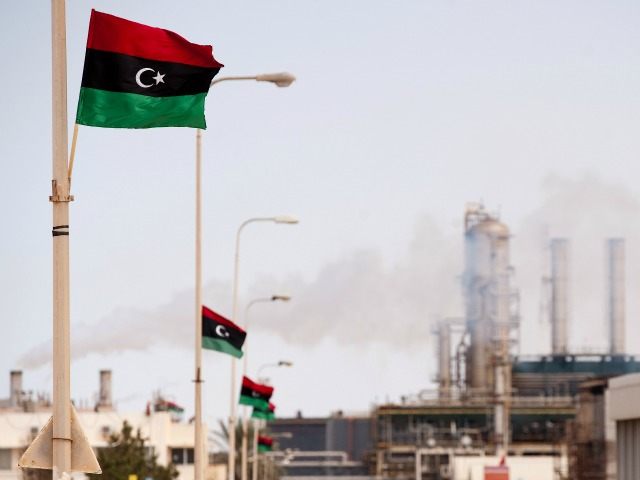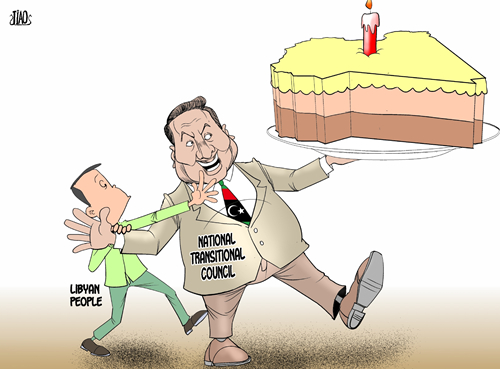[fblike]
 In 2011, the North Atlantic Treaty Organization (NATO) secured the approval of the United Nations Security Council to intervene in Libya to prevent Muammar Gaddafi from slaughtering civilians. Gaddafi was in the midst of a widespread revolt after he used violence against demonstrators that were inspired by the Arab Spring, which by that point rocked Tunisia and Egypt. However, NATO quickly moved from protecting civilians via no fly zones to regime change and in October 2011, anti-government rebels caught up to Gaddafi and executed him. Although President Obama wanted to avoid another Iraq, that is what transpired in Libya except this time no U.S. forces were committed to postwar reconstruction. Instead, Libya gradually devolved into political in-fighting and civil war and much like Iraq and Syria today, the country is under threat from the Islamic State, which is attempting to establish a foothold in the North African country to strike out at Libya’s neighbors and across the Mediterranean at Europe. Last week, in a speech at the National Defense University in Washington, President Barack Obama said that the biggest mistake of his presidency was not planning the reconstruction of Libya better, but there are some signs that things could improve. For example, the leader of a UN-approved government, Fayez al-Serraj, arrived last week to serve as Libya’s new prime minister and quickly won over some Tripoli militias and the loyalty of the heads of the central bank and national oil company. Still, al-Serraj has a tough road ahead of him to get Libya running smoothly again and he must handle militias, win over opposition legislators, and secure more economic support from the West so that Libya does not become a “Somalia on the Mediterranean” that Western policy analysts most fear.
In 2011, the North Atlantic Treaty Organization (NATO) secured the approval of the United Nations Security Council to intervene in Libya to prevent Muammar Gaddafi from slaughtering civilians. Gaddafi was in the midst of a widespread revolt after he used violence against demonstrators that were inspired by the Arab Spring, which by that point rocked Tunisia and Egypt. However, NATO quickly moved from protecting civilians via no fly zones to regime change and in October 2011, anti-government rebels caught up to Gaddafi and executed him. Although President Obama wanted to avoid another Iraq, that is what transpired in Libya except this time no U.S. forces were committed to postwar reconstruction. Instead, Libya gradually devolved into political in-fighting and civil war and much like Iraq and Syria today, the country is under threat from the Islamic State, which is attempting to establish a foothold in the North African country to strike out at Libya’s neighbors and across the Mediterranean at Europe. Last week, in a speech at the National Defense University in Washington, President Barack Obama said that the biggest mistake of his presidency was not planning the reconstruction of Libya better, but there are some signs that things could improve. For example, the leader of a UN-approved government, Fayez al-Serraj, arrived last week to serve as Libya’s new prime minister and quickly won over some Tripoli militias and the loyalty of the heads of the central bank and national oil company. Still, al-Serraj has a tough road ahead of him to get Libya running smoothly again and he must handle militias, win over opposition legislators, and secure more economic support from the West so that Libya does not become a “Somalia on the Mediterranean” that Western policy analysts most fear.
This topic brief will highlight some of the major people and vocabulary that extempers should know when talking about Libya’s problems, explain what those problems are, and then analyze what steps al-Serraj needs to take immediately to put Libya on a more stable foundation.
Readers are also encouraged to use the links below and in the related R&D to bolster their files about this topic.





 The “Arab Spring” of December 2010 created uprisings throughout the Middle East and North Africa and successfully brought down the existing governments of Tunisia, Egypt, and Libya. As extempers are aware, the Arab Spring, which has also been referred to as the “Arab Uprisings” by some Middle Eastern historians like Dr. Juan Romero of Western Kentucky University, has not produced more stability in the region and some countries that were affected are sliding back toward despotism. Egypt has a short-lived post-revolutionary government under the Muslim Brotherhood that was deposed by the Egyptian military in the fall of last year and Libya is struggling to regain its footing after deposing long time dictator Muammar Gaddafi (you will also see Gaddafi referred to in the media as “Qaddafi”). Libya is home to feuding tribal groups and militias, some of whom have seized the country’s ports and prevented oil from leaving the country. In some ways, Libya’s problems mirror those of Iraq after the United States invasion in 2003 where the central government, built around the personality of the main leader, collapsed and the interim government is finding it very difficult to piece the nation back together again. A big difference between the two is that the United States and its allies in the North Atlantic Treaty Organization (NATO) never officially put “boots on the ground” in Libya, so the interim government there has struggled to maintain order.
The “Arab Spring” of December 2010 created uprisings throughout the Middle East and North Africa and successfully brought down the existing governments of Tunisia, Egypt, and Libya. As extempers are aware, the Arab Spring, which has also been referred to as the “Arab Uprisings” by some Middle Eastern historians like Dr. Juan Romero of Western Kentucky University, has not produced more stability in the region and some countries that were affected are sliding back toward despotism. Egypt has a short-lived post-revolutionary government under the Muslim Brotherhood that was deposed by the Egyptian military in the fall of last year and Libya is struggling to regain its footing after deposing long time dictator Muammar Gaddafi (you will also see Gaddafi referred to in the media as “Qaddafi”). Libya is home to feuding tribal groups and militias, some of whom have seized the country’s ports and prevented oil from leaving the country. In some ways, Libya’s problems mirror those of Iraq after the United States invasion in 2003 where the central government, built around the personality of the main leader, collapsed and the interim government is finding it very difficult to piece the nation back together again. A big difference between the two is that the United States and its allies in the North Atlantic Treaty Organization (NATO) never officially put “boots on the ground” in Libya, so the interim government there has struggled to maintain order. 
 Here is today’s premium R&D to accompany
Here is today’s premium R&D to accompany  Today’s R&D provides extempers with resources on the problems facing Libya, which has been in a state of disrepair since the Arab Spring toppled longtime dictator Moammar Gaddafi from power in 2011.
Today’s R&D provides extempers with resources on the problems facing Libya, which has been in a state of disrepair since the Arab Spring toppled longtime dictator Moammar Gaddafi from power in 2011.